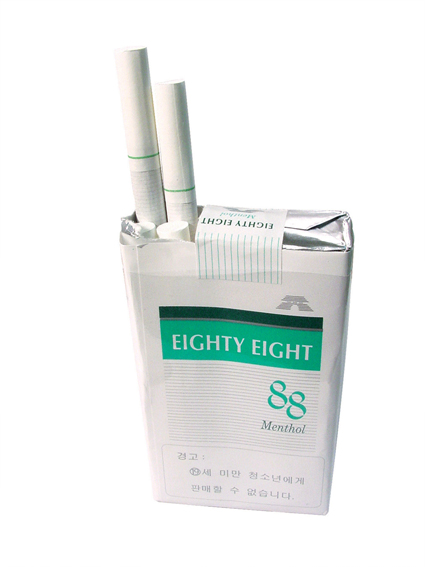
The government announced that they will increase the price of tobacco from January 2015. Since the announcement, there have been many arguments about the increase.
pro
The Ministry of Health and Welfare will increase tobacco prices by from 1,000 (40%) to 2,000 (80%) won in 2015 to promote an antismoking policy. There are two reasons why this policy has to be adopted.
First, an increase in price is the most effective method to decrease the smoking rate. According to OECD research in 2010, the current Korean tobacco price is the lowest among the OECD members. In addition, the Korean male smoking rate was 37.6% in 2012, the second highest rate among the OECD members. The survey showed that the price of tobacco was less than 5,000 won in eight of the top 10 smoking countries. On the other hand, six of the bottom 10 were more than 8,000 won. In other words, countries whose tobacco price is low have a high smoking rate. According to the Korea Institute for Health and Social Affairs (KIHASA), increasing the tobacco price by 10% can decrease consumption of tobacco products by about 4%. We can successful decrease the smoking rate by at least 17.6% through an increase of 40% in tobacco prices. For instance, in Mexico in 2004, the government increased the price of tobacco by 500 won, and the male smoking rate decreased from 57.8% to 50.3% after one year. As a result, like Mexico, the male smoking rate in Korea can successful be decreased.
Second, increasing the tobacco price can decrease smokers’ health costs. Health costs caused by smoking were 1~1.2 trillion won in 2011. The WHO estimates about 20% of illnesses are caused by the influence of smoking. Between 2007 and 2011, health expenditure increased continuously because of smoking related diseases. Even worse, the expense has exceeded the government budget for smokers since 2009. If the tobacco price increases, than tax revenues will increase. According to the Ministry of Health and Welfare, if the government increases the price by 40%~80%, tax revenues will increases from 1 trillion won to 1.5 trillion. The government will use these tax revenues for rehabilitation treatment for smokers such as clinics for quitting smoking. After increasing the price, the Ministry of Health and Welfare plans to increase insurance coverage on drugs for smokers, for instance, Chantix and Zyban. Then people can save more than 70% of the payment.
An increase in tobacco prices can provide better conditions for smokers, and smokers can reduce expenditure. Countries whose tobacco price is high usually have lower smoking rates than others. From this perspective, an increase in tobacco prices is a necessary and valid method to reduce the smoking rate.
By Lee Sang-hak
KMG Junior Reporter
tundra@kmu.ac.kr
KMG Junior Reporter
tundra@kmu.ac.kr
con
The Ministry of Health and Welfare has announced the price of cigarettes will increase by 2000 won from January 2015. The government insists that increasing the price of cigarettes will reduce smoking rates. However, I don’t agree with this policy.
First, the policy doesn’t consider the low-income classes. If the price is raised, working class people will be burdened. A recent survey about adult male smoking rates shows that needy people smoke much more than rich people. The smoking rate is the highest in the low-income class (47.5%), second in the middle class (43.1%), and lowest in the upper class (36.6%). Most consumers are low-income class. According to the National Statistical Office, the lowest 20 percent of workers earns just 8,300,000 won annually. Therefore, if the price increases suddenly, the low-income class will spend more, and they will feel economic hardship.
Second, it is possible that people will smoke counterfeit cigarettes manufactured cheaply and badly in China because these are cheaper than the market price. Some countries such as Australia rapidly increased the price of cigarettes from 2000. Illegal cigarettes increased due to the price going up. An empty pack survey estimated the number of illegal cigarettes by analyzing lots of discarded packets of cigarettes. The survey showed illegal cigarettes increased as the price of cigarettes went up. If counterfeit cigarettes increase in Korea, the health of smokers may get worse because counterfeit cigarettes have more nicotine and tar than ordinary cigarettes according to an ingredient analysis which was conducted by KT&G.
Some supporters of increasing the price justify their argument by the fact that Korea’s cigarette price is much cheaper than other countries in the OECD, but such comparisons have a problem. According to 2012 OECD health statistics, the cigarette price in Greece is 107% the minimum hourly wage. It is approximately twice the rate of Korea, but the male smoking rate in Greece is 43.7%. It is higher than the Korean male smoking rate which is 37.6%. It shows that there is a low correlation between male smoking rates and cigarette cost. Therefore, the smoking rate will not decrease as much as people expect through increasing the price of cigarettes.
Increasing the price of cigarettes is not a suitable measure to reduce the smoking rate. It just gives an economic burden to smokers. If the government really cares about people’s health, they must introduce methodical anti-smoking programs and support anti-smoking clinics, not increase the price.
By Choi Yu-jin
KMG Junior Reporter
cscom170@kmu.ac.kr
KMG Junior Reporter
cscom170@kmu.ac.kr








